Interview: William Yang
Written by Hello Bookcase, Posted in Interviews
In the 1970s and ’80s William Yang captured Sydney’s emerging artistic, literary, theatrical and queer circles through his lens. Today William welcomed us into his home with a cup of green gun powder tea, shared with us stories from his past and present, read us poetry from Constantine P. Cavafy and took us on a journey while he searched high and low for some of his most treasured books.
At the moment I am reading a book of short stories by Colim Tobin – The Empty Family. I like him very much and I am also reading a book from spiritual writer Eckhart Tolle. There are several writers I can always read. I pick them up and they speak to me as if they are there – Edmund White, Helen Garner, and Christopher Isherwood. I do feel I have gotten lazier in what I am prepared to take on reading. Nothing too difficult, nothing too long.– there is so much other competition for your attention.
I actually prefer non-fiction to fiction. I think that it’s got something to do with documentary photography. I found the real more powerful than the created and that is also a part of my philosophy as well – there is a fascination in the ordinary. I tend towards biographies and documentaries – those real issues. I find too much artifice in fiction.
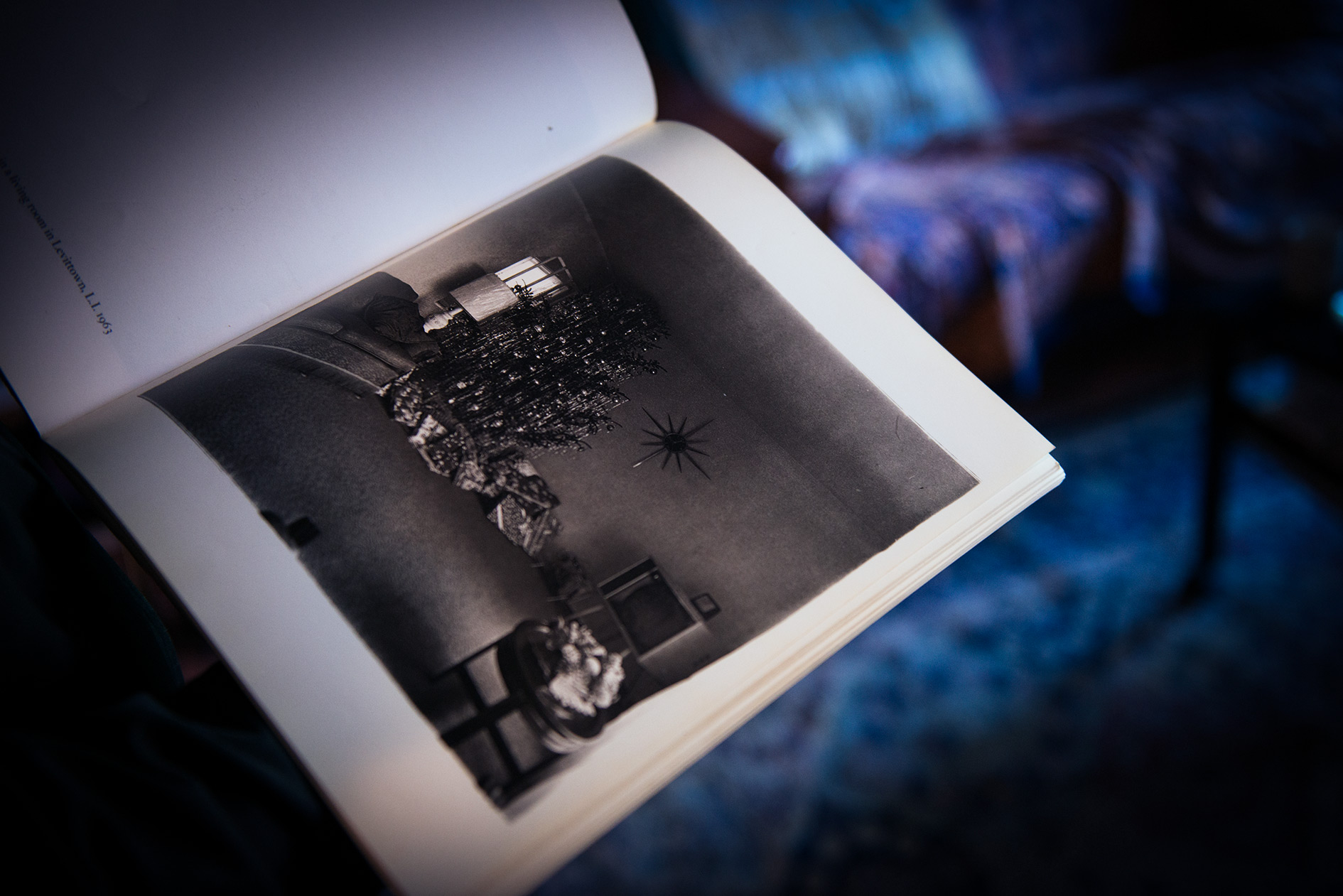 My favourite photographic book is by Diane Arbus called Monograph. She cut through and reached an inner psychology of the person that she was photographing. People always think I like Robert Mapplethorpe because of the gay association but I think he focuses too much on the exterior whereas Diana Arbus penetrates.
My favourite photographic book is by Diane Arbus called Monograph. She cut through and reached an inner psychology of the person that she was photographing. People always think I like Robert Mapplethorpe because of the gay association but I think he focuses too much on the exterior whereas Diana Arbus penetrates.
She converted me to photography after I saw some of her photographs in Artforum, which is an American art magazine. I thought they were incredible, although I wouldn’t call myself as good as a photographer as Diane Arbus. Brassai is also a photographer I like – I have his book The Secret Paris of the 30’s. He would hang out in the streets and bars of Paris and photograph the nightlife, gays and lesbians and brothels.
The book Up Close is a catalogue from an exhibition at Heidi Museum of Contemporary Art in Melbourne. It featured Carol Jerrems work with support acts by Nan Goldin, Larry Clark and me. Sydney Diary was my most successful book probably because it was a mixture of Sydney images of the beach, gay, diary, people and celebrities but it is now out of print and is rare. My latest is a hand written zine Australian Asian Queer that was printed in Canada.
Williams work is also featured in 25 Belvior Street– a book of essays and photographs celebrating 25 years of theatre at Belvoir. This is one of my photos of Neil Armfield and Geoffrey Rush after one of their performances of Exit the King but rare in that the actor that played the soldier was sick that day – so Neil played the part.  I enjoy reading poetry – I like Robert Anderson and Robert Gray who are my friends. Absolutely my favourite poet is Constantine P. Cavafy – I have used some of his poems onto my photos. He was from Alexandria and he wrote in the early 20th Century.
I enjoy reading poetry – I like Robert Anderson and Robert Gray who are my friends. Absolutely my favourite poet is Constantine P. Cavafy – I have used some of his poems onto my photos. He was from Alexandria and he wrote in the early 20th Century.
Cavafy wrote poems where he imagined historical characters and events and he also wrote about his everyday life. He influenced me because there was a certain everyday tone in his work that I try to emulate in my pieces. It’s very matter of fact and yet it is highly contrived. I discovered him through the David Hockney etchings based on Cavafys poems.
I do have a few books of my performance pieces but they are all out of print.Three years ago I received a fellowship from the Australia Council to make DVDs of my performance pieces. I think the DVD format gets closer to the performance than a book. You get an idea of my presence in the work which you don’t get in a book. I don’t take that many photographs now – I am trying to get my existing collection in order so it is consumable.
I directed with Annette Shun Wah, Stories Now and Then, a performance piece that has just finished at Carriageworks. I wasn’t performing in it, but we had six Asian Australians telling their stories using my method of talking with image projection. It was very successful. ‘William Yang: My Generation’ recently screened at the Sydney Film Festival to sold out audiences and will be rescreened on ABC1’s Sunday Arts Up Late.
I asked William about his early playwriting days. I have destroyed my early plays and I date my work from my performance pieces because that is when I found my voice. The performances are more me and my early work is more derivative. I never mention them on my CV!
There is beautiful book by Edmund White called My Lives. I think it is a masterpiece of biography writing because I can identify with it being gay and having many different lives. I think he divided it up quite nicely with this book. The way he writes about his mother in the book is also incredible and I like to reread the story. The Burning Library is book of essays from Edmund White. He has an essay on gay culture called Sexual Culture – written in 1983 when I was very much into gay politics. I actually photocopied the story and sent it to my friends.
Within William’s shelves is the anthology of Gay Australian Writing. This book features Robert Dessaix – I like his work a lot, Christos Tsiolkas and also Peter Rose, he is a poet and also wrote The Rose Boys – a memoir about his brother who had an accident and was confined to a wheel chair. David Marr is in there too- I admire David as an activist and in my day David was a spokesman for the left wing. His biography on Patrick White is fantastic.
I had heard about Patrick White – his reputation had preceded him. He knew about my work as he had purchased one of my images from my exhibition. Patrick had written plays in the 50’s and 60’s, which were produced but he wasn’t very happy with the productions. In the 80’s – Jim Sharman started to resurrect some of his plays. The first one was The Season of Sarsaparilla which was a very successful production, which starred Kate Fitzpatrick, Robyn Nevin and Max Cullen. With this success, Patrick started to write new plays – he had written Big Toys for Kate, Max and Arthur Digman which was set in Sydney.
I first met Patrick in Kate Fitzpatrick’s dressing room on the opening performance of Big Toys. There is a story to this — Brian Thomson, the set designer and been researching Patrick’s life and had come across a note that Patrick had written to Father Christmas when he was six years old.
Dear Father Christmas – we will please send me a butterfly net, a violin, Robison Crusoe, History of Australia, bag of marbles and a little mouse that runs across the room…..
Brian had bought all these presents and put them in a pillowslip and gave them to Patrick as an opening night present. He was delighted – so the first photo I have ever taken of him was of him holding a photograph of a little mouse – Brain had pushed me forward and said “Take this photo” – I don’t think I even had said hello to him.
There is another book I consider a treasure – it is unpublished. David Marr gave a talk about Patrick White called – A Life in his Face. I supplied David with many photographs for him to use and he gave me this transcript of the talk. It features all the people who have painted Patrick White and gives a history. I was thrilled to receive it from David.
I call myself Taoist. Lao Tze’s book Tao Te Ching is translated “the way, virtue, book” and in the West it is the text for the philosophy Taoism. It’s not a religion, more an instruction for living, being in cooperation with the course or trend of the natural world.
I have read many translations and books on Taoism. My favourite translation is by Ursula le Guin, the poet and science fiction writer. It’s bold and poetic. I have bought many copies of 365 Tao Daily Meditations by the San Francisan born Chinese, Deng Ming-Dao, to give away as many people have asked me about Taoism and it’s a good introduction to self-cultivation by a daily practice.
I like books on death and spirituality, two different subjects. Seize the Day – how the dying teach us to live, by Marie de Hennezel, I found uplifting. They are stories from a hospital for the dying in France. There’s one resonant line where she says that everyone needs to tell their story before they die as a kind of completion of their life.
My favourite sage at the moment is Eckhardt Tolle. He wrote The Power of Now and A New Earth, where he says that being spiritually conscious is a way of saving the world. One’s inner purpose is to awaken. For him his awakening happened spontaneously. Whereas many people I have read on this subject have spent years in monasteries, training by the book, Tolle gives hope that it can happen now, wherever you are. His writing is clear, he quotes Jesus Christ, Buddha and Lao Tze to reinforce his ideas. So he manages to have an overview which seems to embrace a world history of spirituality. I don’t hold it against him that he is popular, he’s been on Oprah.
Another of my treasured books is My Life and Work by Taam Sze Pui. I only had photocopied sheets of the book but I had them bound into a book. It is an account of a life of relative of mine through marriage who was a shop owner in Northern Queensland. The book was privately published and it was reprinted by one of his descendants – only about 60 copies but an extract is also in the Macquarie PEN Anthology of Australian Literature.
It’s completely different from the Western view of the Chinese at the time. I treasure it because it is a rare account by a Chinese, perhaps the only one – it’s a true artefact.
About William Yang
William Yang was born in North Queensland, Australia. He moved to Sydney in 1969 and worked as a freelance photographer documenting Sydney’s social life which included the glamorous, celebrity set and the hedonistic, sub-cultural, gay community.
In 1989 he integrated his skills as a writer and a visual artist. He began to perform monologues with slide projection in the theatre. These slide shows have become the main expression of his work. They tell personal stories and explore issues of identity. He has done eleven full-length works and most of them have toured the world. “Sadness”, his most successful piece, was made into an award winning film by Tony Ayres in 1999.
William’s current work is photo based, doing performances in theatres and exhibitions in galleries. He is converting some of his live performance pieces into video at the University of NSW. He also conducts workshops in story telling, helping other people tell their story.
William Yang: My Generation will be broadcasted at 10:25pm on Sunday 16 June on ABC1’s Sunday Arts Up Late.
Leigh Russell and Kathy Luu chatted with William on Monday 3 June 2013. Images by Kathy Luu.
© Hello Bookcase 2013. Unauthorized use and/or duplication of this material without express and written permission from this blog’s author and/or owner is strictly prohibited.
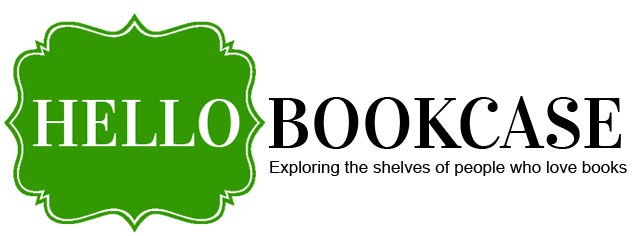


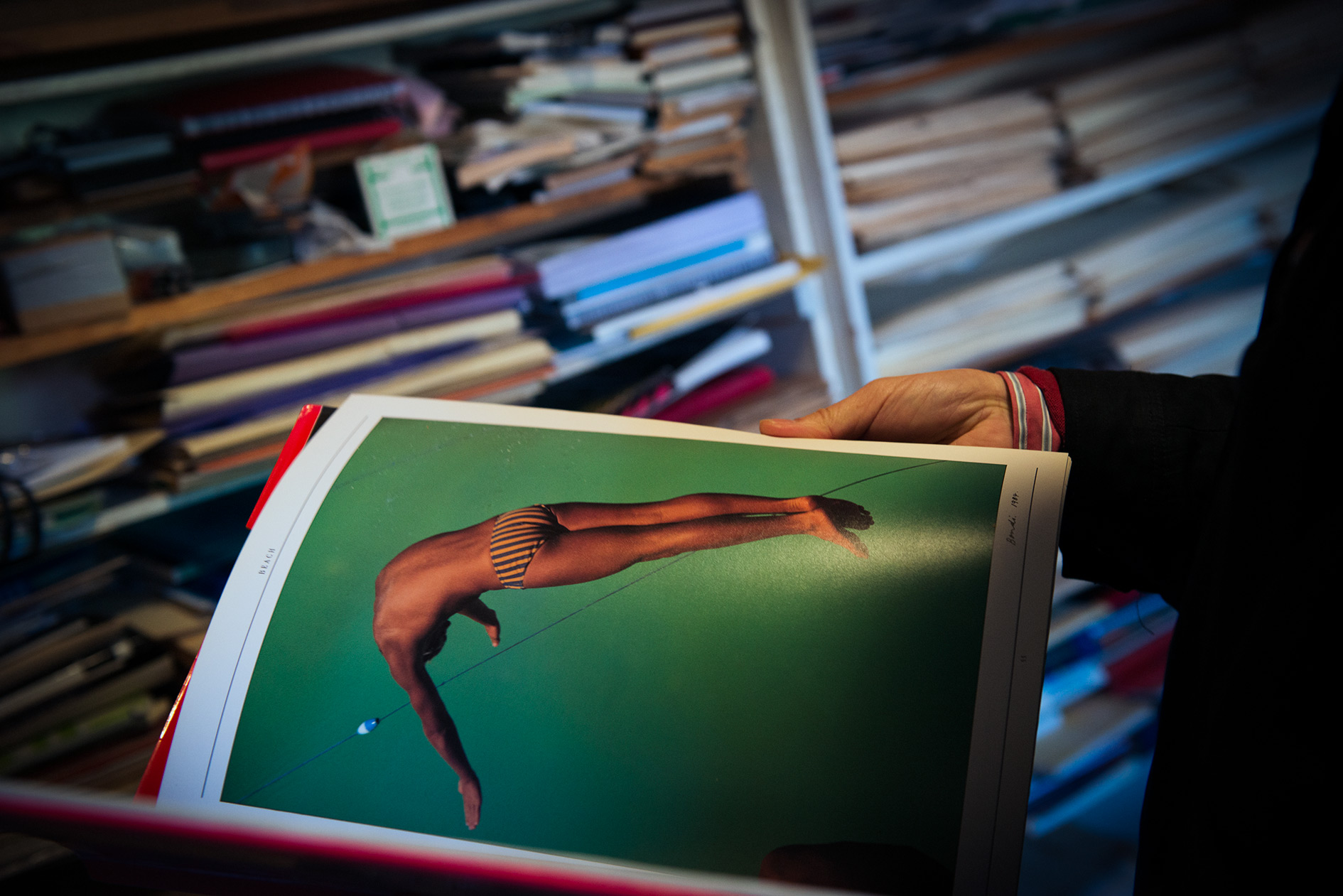
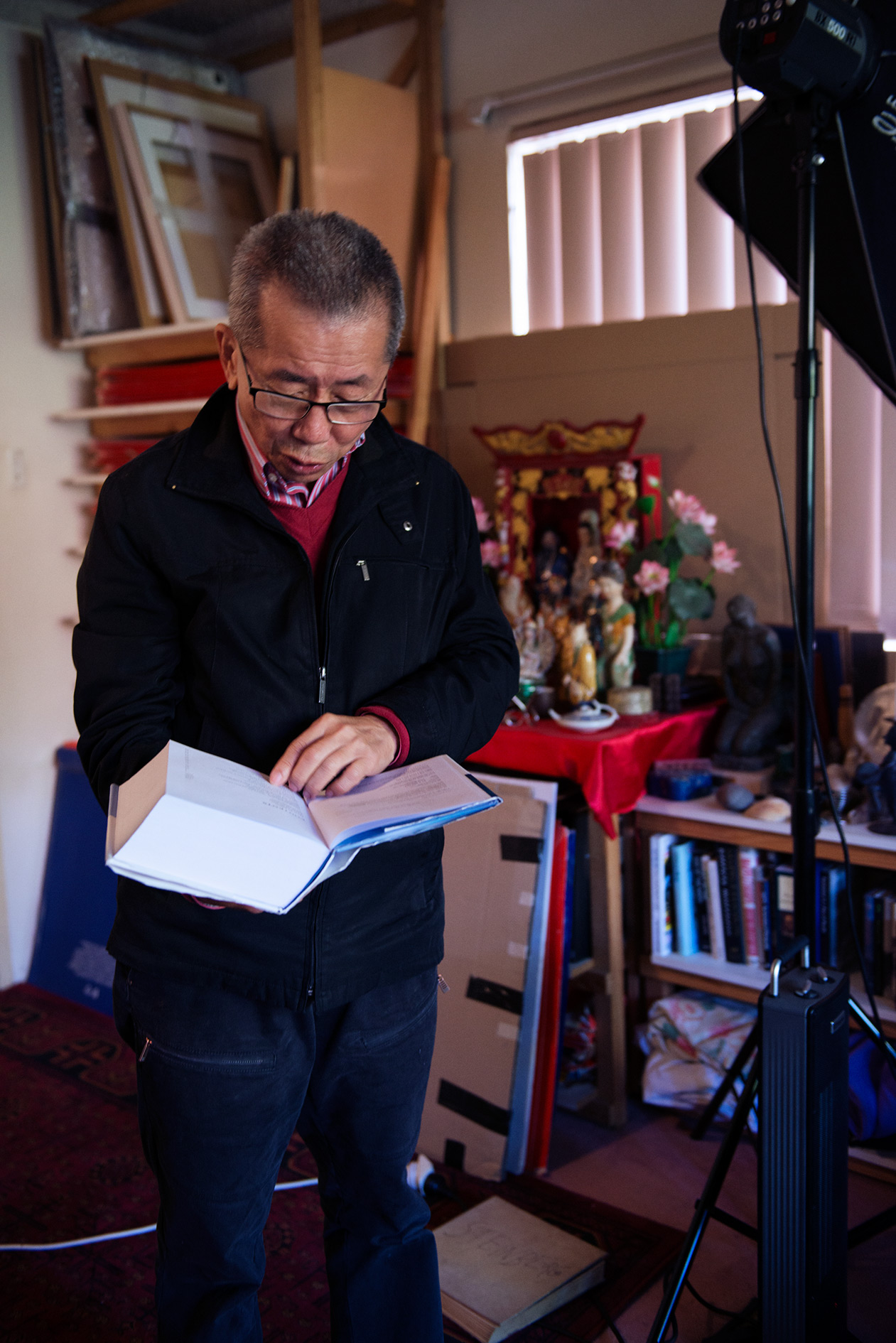




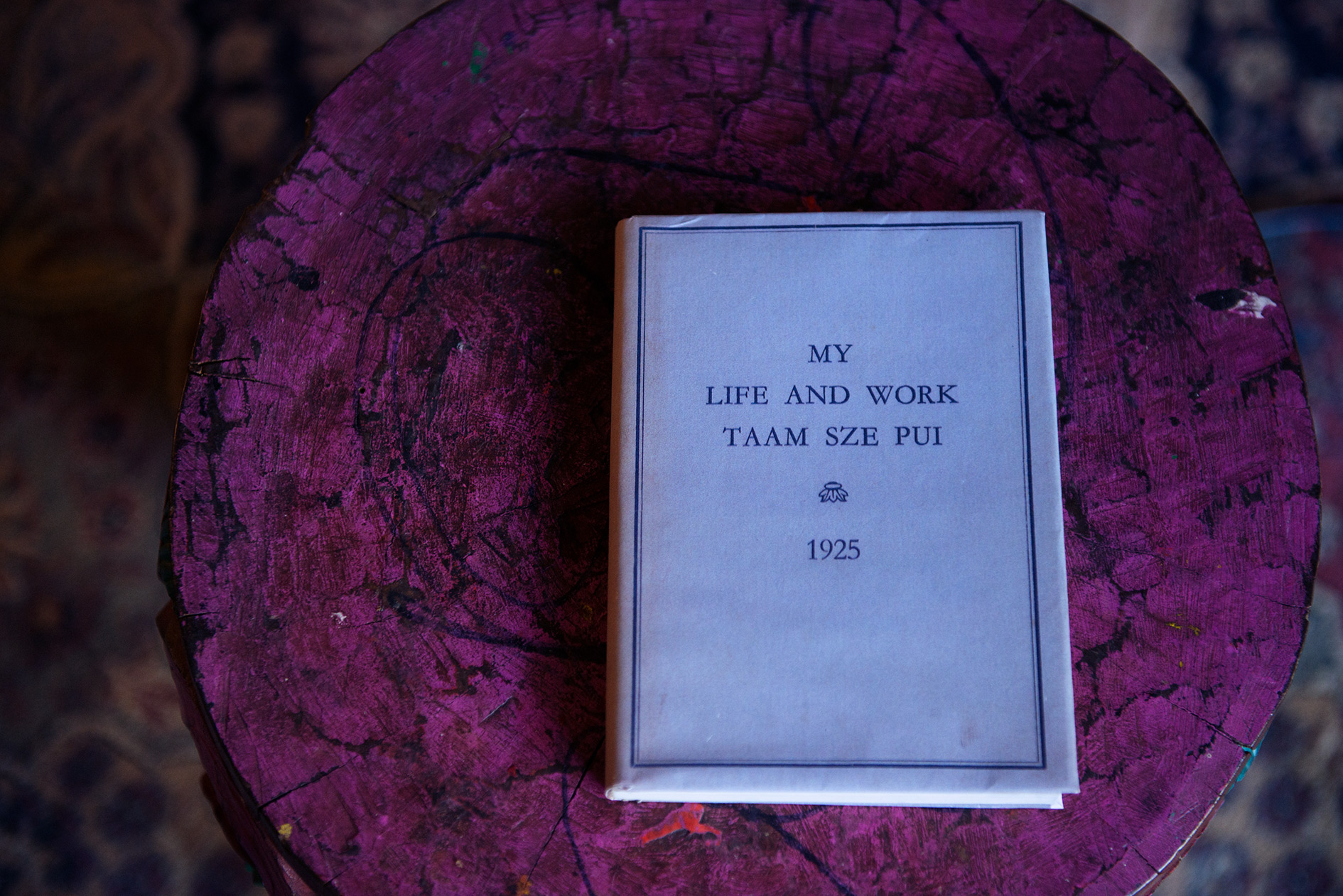
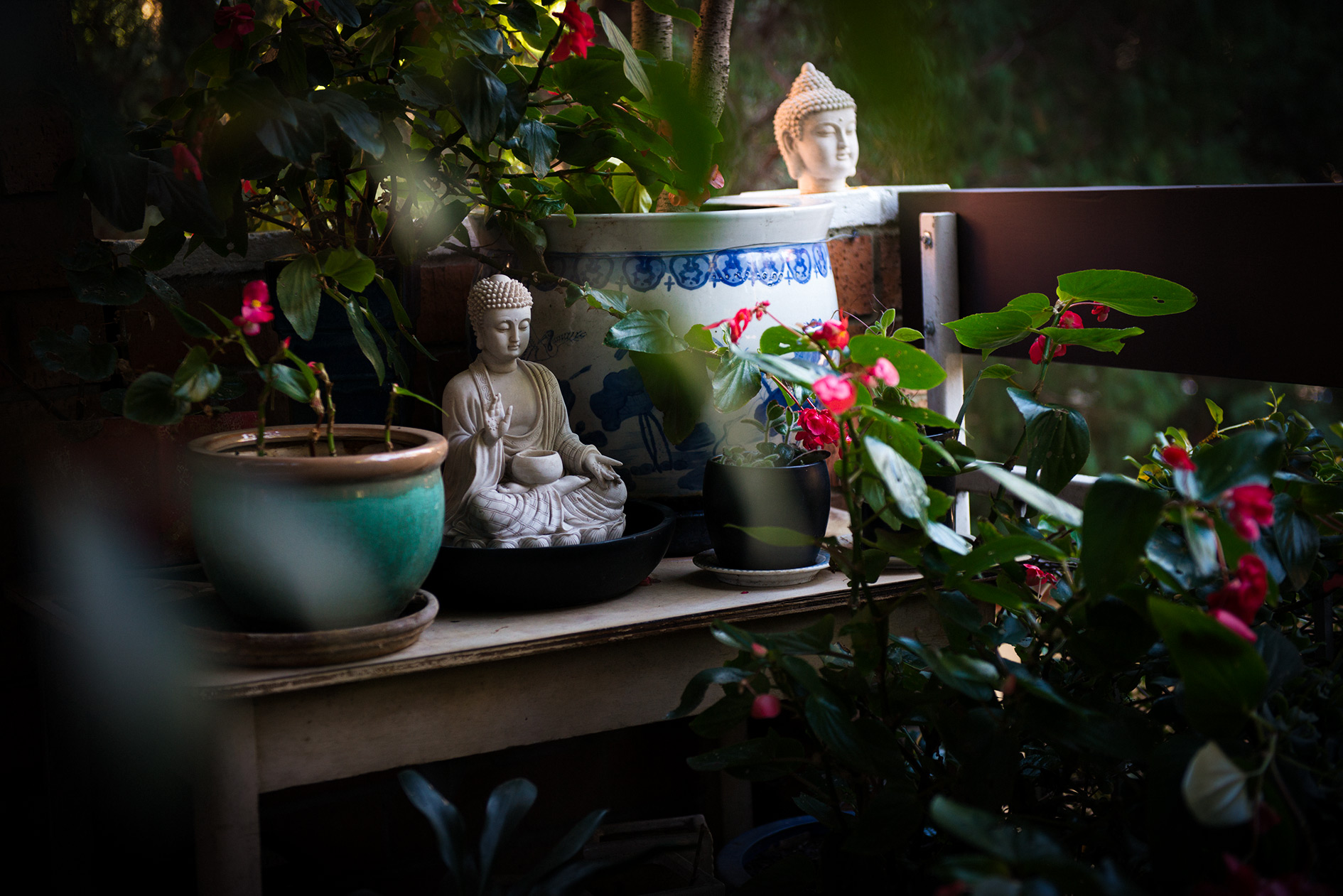
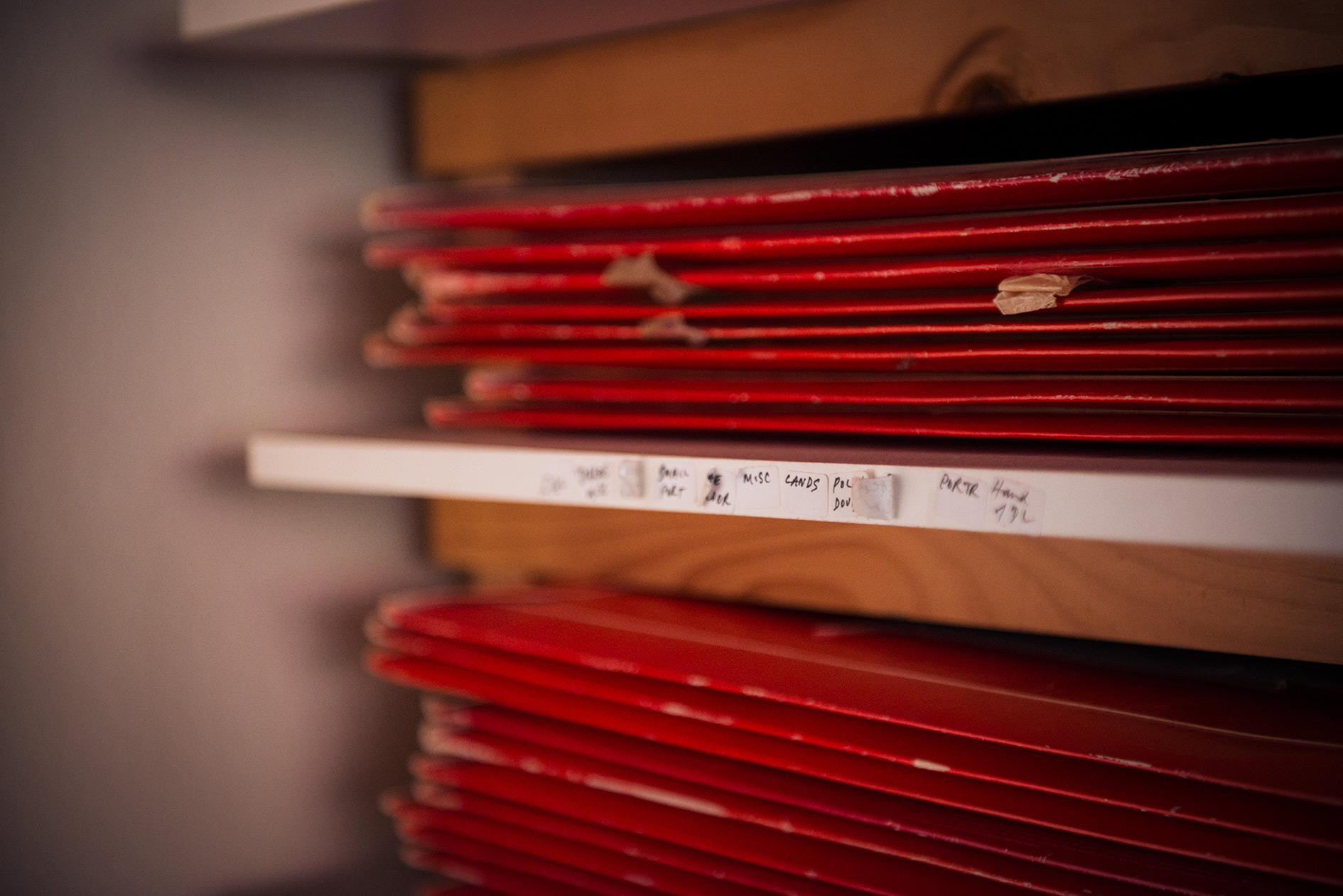
I saw My Generation at the SFF – thank you for sharing a personal insight into William Yangs life.